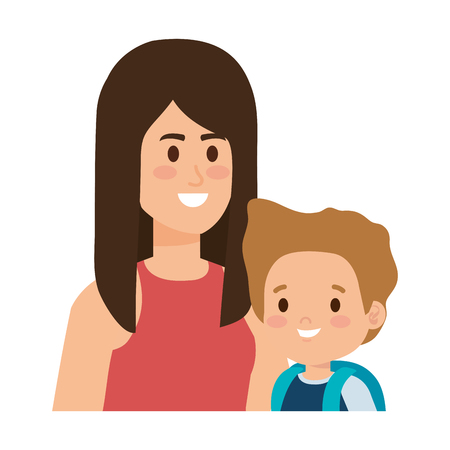1. Understanding Why Tantrums Happen
Toddler tantrums can feel overwhelming, but they are a normal part of child development. Understanding why tantrums happen can help you anticipate and prevent them before they escalate.
Common Causes of Toddler Tantrums
Young children experience big emotions but don’t always have the words to express them. Here are some of the most common reasons toddlers throw tantrums:
| Cause | Description |
|---|---|
| Frustration | Toddlers get frustrated when they cant do something on their own or when they struggle to communicate their needs. |
| Hunger | A hungry toddler is more likely to be irritable and less able to regulate emotions. |
| Fatigue | Lack of sleep or skipping naps can make it harder for toddlers to cope with everyday challenges. |
| Overstimulation | Loud noises, bright lights, or too many activities can overwhelm toddlers and lead to meltdowns. |
| A Desire for Independence | Toddlers want to do things on their own, and when they can’t, they may react with frustration. |
| A Need for Attention | If a toddler feels ignored, they may resort to tantrums to get a parent’s attention. |
How to Anticipate and Prevent Tantrums
You can reduce the frequency of tantrums by being proactive. Here are some ways to help your toddler stay calm:
- Create a Routine: Toddlers thrive on consistency. Keeping a predictable schedule for meals, naps, and playtime helps them feel secure.
- Avoid Hunger and Fatigue: Offer healthy snacks throughout the day and ensure your child gets enough sleep.
- Give Choices: Allowing toddlers to make small choices (such as picking between two snacks) gives them a sense of control.
- Use Distraction: If you see frustration building, redirect your toddler’s attention to another activity.
- Praise Good Behavior: Reinforce positive behavior by acknowledging when your child handles situations well.
- Name Their Feelings: Helping toddlers identify their emotions teaches them how to express themselves without tantrums.
Tantrums are a normal part of growing up. By understanding what triggers them and using simple strategies, you can help your toddler navigate big emotions more smoothly.
2. Staying Calm and Composed
Dealing with a toddler tantrum can be overwhelming, but staying calm is key to managing the situation effectively. Your child looks to you for emotional cues, so maintaining your composure helps them feel safe and supported. Here’s how you can regulate your emotions during a tantrum.
Take Deep Breaths
When your toddler starts screaming or crying, take a moment to focus on your breathing. Deep breathing helps lower stress levels and keeps you from reacting emotionally. Try this simple technique:
| Step | Description |
|---|---|
| 1. Inhale Slowly | Breathe in deeply through your nose for four seconds. |
| 2. Hold | Hold your breath for four seconds. |
| 3. Exhale Slowly | Breathe out through your mouth for six seconds. |
| 4. Repeat | Continue this process until you feel more in control. |
Avoid Reacting Emotionally
Your first instinct might be to raise your voice or get frustrated, but responding with anger often escalates the tantrum. Instead, try these approaches:
- Pause Before Responding: Take a second to assess the situation before speaking.
- Use a Calm Tone: Speak in a soft, steady voice to reassure your child.
- Avoid Harsh Words: Phrases like “Stop crying!” can make things worse. Instead, say, “I see youre upset.”
Set a Positive Example
Your child learns emotional regulation by watching you. If they see you staying calm under stress, they will learn to do the same over time. Practice patience and model healthy coping skills like deep breathing and using words to express feelings.
Create a Soothing Environment
If possible, guide your toddler to a quiet space where they can calm down without too many distractions. Soft lighting, gentle reassurance, or even offering a comfort item like a favorite stuffed animal can help them regain control of their emotions.

3. Effective Strategies to De-escalate Tantrums
Tantrums can be overwhelming, but there are practical techniques you can use to help calm your toddler and regain control of the situation. The key is to remain patient and consistent while offering support in a way that helps your child feel understood and secure.
Use Distraction Techniques
Toddlers have short attention spans, which makes distraction an effective way to redirect their focus away from the source of frustration. Try engaging them with a favorite toy, pointing out something interesting in the environment, or shifting their attention to a fun activity.
Validate Their Feelings
Letting your child know that you understand their emotions can help them feel heard and reduce frustration. Use simple phrases like:
- “I see youre upset.”
- “Its okay to feel frustrated.”
- “I know you really wanted that toy.”
This approach reassures your toddler that their feelings matter while also teaching them emotional awareness.
Offer Choices
Giving toddlers a sense of control can help prevent tantrums from escalating. Instead of forcing a decision on them, offer two acceptable choices. For example:
| Instead of Saying | Try This |
|---|---|
| “Put on your shoes now!” | “Do you want to wear the red shoes or the blue ones?” |
| “Eat your vegetables!” | “Would you like carrots or broccoli?” |
| “Time for bed!” | “Do you want to read one book or two before bed?” |
This technique helps toddlers feel more in control while still achieving the desired outcome.
Maintain a Calm and Reassuring Tone
Your child will mirror your emotions, so staying calm is crucial. Speak in a gentle, soothing voice and keep your body language relaxed. Avoid raising your voice or showing frustration, as this may escalate the situation further.
Use Gentle Physical Comfort
Sometimes, a hug or holding their hand can provide reassurance and help them regulate their emotions. However, if your toddler resists physical comfort, respect their space and offer verbal reassurance instead.
Encourage Deep Breathing
If your toddler is old enough to understand, guide them through deep breathing exercises. Demonstrate by taking slow breaths and encourage them to follow along: “Lets take a deep breath together—inhale… exhale…” This simple practice can help them calm down faster.
By using these strategies consistently, you can help your toddler navigate big emotions in a healthy way while reducing the intensity and frequency of tantrums over time.
4. Setting Clear Boundaries and Expectations
Toddlers thrive on structure and consistency. When they understand what is expected of them, they feel more secure and are less likely to have meltdowns. Setting clear boundaries and expectations helps guide their behavior while teaching them how to express emotions in a healthy way.
Why Consistency Matters
Consistency is key when it comes to discipline. If rules change frequently or are not enforced consistently, toddlers may become confused and frustrated. Here’s how consistency helps:
- Builds trust: Your toddler learns that you mean what you say.
- Reduces tantrums: Predictable rules help minimize frustration.
- Encourages self-regulation: They start understanding acceptable behavior over time.
How to Set Clear Rules
The best way to set boundaries is by keeping rules simple and easy to follow. Use short phrases and reinforce them regularly.
| Rule | How to Enforce It |
|---|---|
| “No hitting.” | If your toddler hits, calmly say, “We don’t hit. Use gentle hands,” and redirect them. |
| “Use your words.” | If they scream or throw a tantrum, encourage them to express their feelings with words instead. |
| “Inside voices only.” | If they yell indoors, remind them gently: “We use quiet voices inside.” |
| “Clean up after playtime.” | Make cleanup fun by singing a song or turning it into a game. |
The Role of Gentle Discipline
Punishment doesn’t teach toddlers the right way to behave—guidance does. Gentle discipline focuses on teaching rather than punishing. Try these methods:
- Redirect behavior: Instead of saying “no” all the time, offer alternatives. Example: If your toddler throws a toy, say, “Let’s throw this soft ball instead.”
- Acknowledge feelings: Validate their emotions by saying, “I see you’re upset because we had to leave the park.” This helps them feel understood.
- Praise positive behavior: Reinforce good actions with praise like, “Great job using your words!” Positive reinforcement encourages repetition of good behavior.
Teaching Emotional Expression
Toddlers often throw tantrums because they don’t yet know how to express emotions properly. Help them learn by modeling appropriate ways to communicate feelings.
Tips for Encouraging Healthy Emotional Expression
- Name emotions: Teach them words for their feelings, such as happy, sad, frustrated, or excited.
- Create a calm-down space: Have a cozy area with books or stuffed animals where they can go when overwhelmed.
- Breathe together: Teach deep breathing techniques like “smell the flower, blow out the candle” to help them calm down.
- Dramatic play: Use dolls or puppets to act out different emotions and ways to handle them.
Toddlers need guidance in learning emotional regulation. By setting clear boundaries with consistent rules and gentle discipline, you can help your child develop better coping skills while reducing tantrums over time.
5. Post-Tantrum Connection and Learning
After a tantrum, your toddler may feel overwhelmed, confused, or even guilty about their outburst. This is a great opportunity to reconnect with them, help them understand their emotions, and teach valuable coping skills for the future.
Reassure and Comfort Your Child
Once your child has calmed down, offer comfort and reassurance. Let them know that you love them no matter what and that feelings are normal. A simple hug or a soothing voice can go a long way in making them feel safe.
Talk About Emotions in a Supportive Way
Helping your toddler understand their emotions is key to emotional development. Use simple language to describe what happened and how they felt.
| What to Say | Why It Helps |
|---|---|
| “I saw that you were really upset when we left the park.” | Helps them recognize their feelings. |
| “It’s okay to feel frustrated, but we can use words instead of screaming.” | Teaches appropriate ways to express emotions. |
| “Next time, if youre upset, you can take deep breaths or ask for help.” | Encourages problem-solving and self-regulation. |
Teach Healthy Coping Strategies
Toddlers need guidance on how to handle big feelings. Practice simple techniques together so they know what to do next time they feel overwhelmed.
- Deep Breathing: Teach them to take deep breaths by pretending to blow up a balloon.
- A Calm Corner: Create a cozy space with pillows where they can go when they need to calm down.
- Name Their Feelings: Encourage them to say, “Im mad” or “Im sad” instead of acting out.
The Importance of Consistency
Your toddler learns best through repetition. The more consistently you respond with patience and guidance after tantrums, the quicker they will develop emotional regulation skills.


